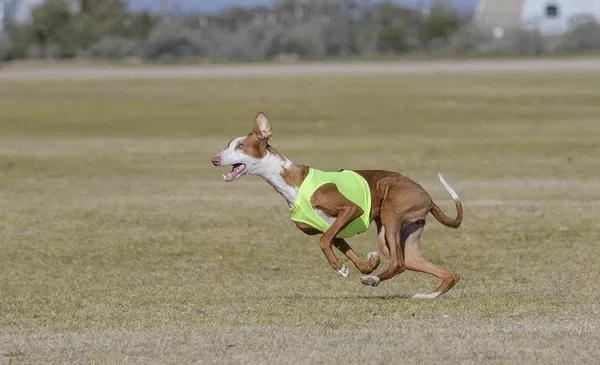Foxhounds are a distinctive breed of dog known for their sharp hunting abilities, keen sense of smell, and endurance. Their roots lie deep in history, tracing back to their use in fox hunting, where they were specifically bred to chase and track game. While their athleticism, speed, and drive are well known, there is a question that many pet owners and dog lovers may have: Can foxhounds swim?
Swimming, an activity that comes naturally to some dog breeds, isn’t necessarily second nature to others. The ability to swim varies across breeds due to factors such as body shape, temperament, and historical roles. In the case of the foxhound, understanding its history, physical attributes, and natural behaviors can help us assess its swimming abilities.
This article delves into the topic of whether foxhounds can swim, examining their physical traits, instincts, and training requirements. Additionally, we will explore tips for safely introducing a foxhound to water and offer advice on when swimming might not be ideal for this particular breed.
Understanding the Foxhound: A Brief Overview
The foxhound is a member of the hound group, with two primary types— the English Foxhound and the American Foxhound. These breeds share many characteristics, but they have been fine-tuned for different hunting traditions.
English Foxhound: Originating in England in the 16th century, the English foxhound was bred specifically for fox hunting. These dogs were designed to work in packs, using their excellent sense of smell to track down and chase foxes through thick underbrush, and their stamina allowed them to run for hours.
American Foxhound: This breed came to the U.S. in the 18th century, where it was bred from the English foxhound and other hound breeds. American foxhounds are known for being slightly taller and leaner than their English counterparts, with a more independent nature. They were also developed for endurance, tracking foxes over long distances, often through rugged terrain.
Despite some differences in appearance and temperament, both types of foxhounds share a similar purpose—tracking and hunting. The breed is highly athletic, with long legs, a lean build, and a high level of energy. Their stamina and determination are key to understanding how they might approach various physical activities, including swimming.
Foxhounds and Water: A Natural Instinct?
Hounds, in general, have a varied relationship with water. Some breeds, like the Labrador Retriever, are known for their love of swimming, thanks to their natural swimming instincts and webbed feet. Other breeds, such as the Dachshund, tend to avoid water, either due to body structure or a lack of natural attraction to it. Foxhounds, on the other hand, fall somewhere in between.
Historically, foxhounds were not bred for water-related tasks. Their primary function was to chase foxes across land, often through dense forests and fields. However, in their day-to-day activities, they could encounter water—rivers, streams, or ponds—while chasing their quarry. This means that although foxhounds weren’t specifically bred as water dogs, many of them possess an innate ability to swim when they are faced with the need to cross a body of water during a hunt.
While it’s not their primary skill set, many foxhounds have no trouble navigating water when necessary. This trait is more a result of their physical endurance and adaptability than any specific water-borne instincts.
Physical Traits and Swimming Ability
Foxhounds have certain physical characteristics that may affect their swimming ability. Let’s explore these traits:
Body Structure: Foxhounds have a lean, athletic body designed for speed and endurance. They have long legs, a deep chest, and a relatively narrow build. These attributes allow them to move swiftly on land, but they can also be an advantage in water. The streamlined body structure allows foxhounds to swim without resistance, as their bodies can cut through the water more easily than a bulkier breed might.
Size: Foxhounds are medium to large-sized dogs, with males typically weighing between 65 and 75 pounds, and females weighing around 50 to 65 pounds. This size makes them capable of handling the physical demands of swimming, though their size may also make swimming more exhausting compared to smaller, more buoyant breeds.
Coat: Foxhounds have a short, dense coat, which provides some water resistance, but not as much as a thick, double-layered coat would. While this type of coat doesn’t make them natural swimmers like breeds with water-resistant coats (such as the Newfoundland), it also doesn’t hinder their swimming abilities significantly.
Energy and Stamina: One of the most defining features of a foxhound is its incredible stamina. These dogs were bred to chase prey for hours without tiring. This high energy and endurance level means that once a foxhound gets into the water, it’s likely to keep swimming for long periods if necessary.
Temperament: Foxhounds are intelligent, independent, and sometimes stubborn dogs. While they are very trainable when it comes to following commands during a hunt, they may not always respond immediately to training for other activities like swimming. They are also more focused on tasks that align with their instincts, such as hunting or tracking, rather than seeking out water for recreational purposes.
Can Foxhounds Swim Well?
In general, foxhounds can swim, but they are not natural swimmers in the way that some other breeds are. Their ability to swim well largely depends on the individual dog’s temperament, past experiences, and whether it has been introduced to water in a positive and controlled way. Some foxhounds will happily jump into a river or lake if encouraged, while others may be more cautious or hesitant.
Like many hound breeds, a foxhound’s swimming skills are not always intuitive, so it’s important to introduce them to water gradually and ensure that they feel comfortable. A foxhound may find it intimidating to enter deep water without prior experience, especially if they are unsure about their footing or the water’s depth. However, once they get the hang of it, many foxhounds will swim with a steady and purposeful stroke, using their strong legs to propel themselves through the water.
Training a Foxhound to Swim
While foxhounds can swim, it’s important to provide proper training and guidance, especially if your foxhound is not accustomed to water. Here are some steps to introduce your foxhound to swimming:
Start Slowly: If your foxhound has never been in the water before, don’t force them into it. Begin with shallow water, where they can stand and gradually become comfortable. Let your dog get used to the sensation of water on their paws before attempting deeper water.
Use Positive Reinforcement: Like any new skill, swimming should be associated with positive experiences. Praise and reward your foxhound when they show interest in the water, and gently encourage them to move further into it. You can also use treats or their favorite toy to entice them.
Stay Close for Safety: Foxhounds may not be as intuitive in the water as breeds like retrievers, so always stay close and watch them. Even if your foxhound is a strong swimmer, it’s important to supervise them to ensure their safety, particularly when swimming in open water.
Choose Calm Waters: Start in calm, shallow water, such as a small lake or pool, where the current isn’t too strong and the water is clear. Avoid rivers or areas with strong currents, as these may overwhelm your dog and make them less confident.
Gradual Exposure: Over time, as your foxhound becomes more confident in the water, you can gradually introduce them to deeper water and longer swims. Make sure to keep the experience positive, and never force your dog into the water if they’re not ready.
Health Considerations: Foxhounds, like all dogs, should be monitored for fatigue while swimming. They may not realize how much energy they’re expending, so take regular breaks and allow them to rest. Always make sure your foxhound is in good health before engaging in activities like swimming.
When Swimming May Not Be Ideal for a Foxhound
While many foxhounds can learn to swim, swimming may not be suitable for all of them under certain circumstances:
Lack of Interest: Some foxhounds may simply not be interested in water. If your dog is hesitant or scared, forcing them into the water can lead to negative associations. It’s important to respect your dog’s comfort level.
Health Issues: If your foxhound has joint issues, heart conditions, or any other health problems, swimming may put undue stress on their body. Always consult with a veterinarian before introducing a dog with health concerns to any physically demanding activities.
Cold or Dangerous Waters: Swimming in cold water or in places with strong currents can be dangerous for any dog, including foxhounds. Foxhounds are better suited for warmer, calm waters where they can swim at their own pace.
Size and Stamina: Larger dogs like foxhounds may get fatigued more quickly than smaller dogs when swimming, especially in deep or turbulent water. Keep in mind that not all dogs, even those capable of swimming, enjoy or excel at it.
Conclusion
Foxhounds, while not naturally predisposed to being water-loving dogs like retrievers or spaniels, are quite capable swimmers when introduced to water in the right way. Their athletic build, endurance, and strong instincts make them well-suited for physical activities like swimming, provided that they are trained and given the proper support.
Understanding that not every foxhound will enjoy or excel at swimming is key. As with any dog, a positive, gradual introduction to water is essential for ensuring a safe and enjoyable experience. With patience, supervision, and care, your foxhound can learn to swim and even enjoy it as part of their active lifestyle.
Ultimately, the question of whether foxhounds can swim depends on the individual dog, but most will rise to the challenge if given the right circumstances. Whether they’re swimming for fun or as part of an adventure, foxhounds are adaptable enough to handle water when it’s part of the equation.
Related Topics:




















